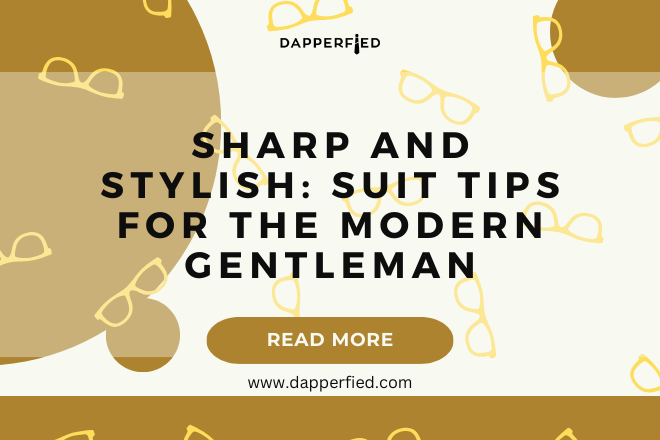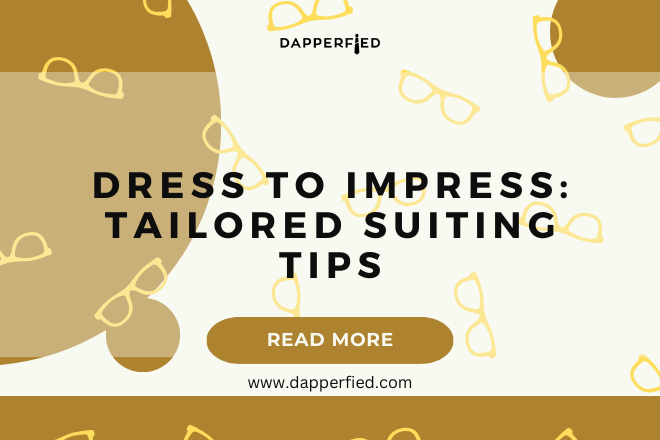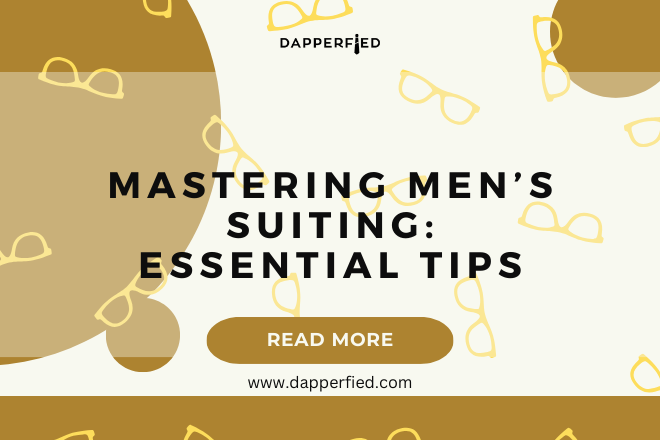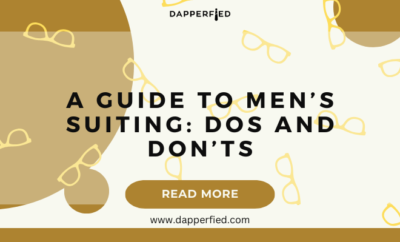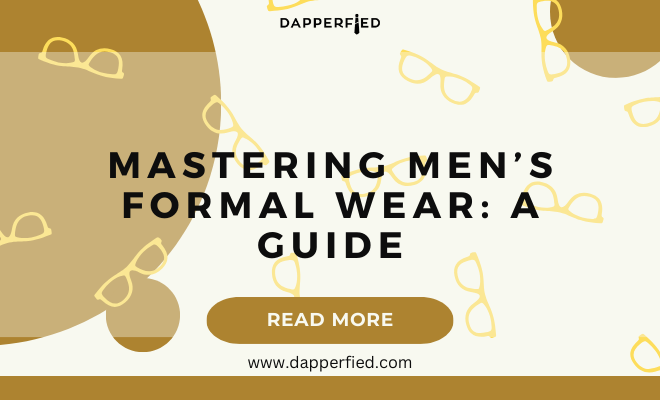
Men's Style
Mastering Men’s Formal Wear: A Guide
Men’s formal wear refers to the attire that men wear for formal occasions such as weddings, black-tie events, and business meetings. It is important because it helps create a polished and professional image, and shows respect for the occasion and the people attending. Men’s formal wear typically consists of a suit, dress shirt, tie, and dress shoes.
There are several occasions where men’s formal wear is required. Weddings are one of the most common occasions where men are expected to dress formally. Whether you are the groom, a groomsman, or a guest, wearing a well-fitted suit is essential. Black-tie events, such as galas or charity balls, also require men to dress formally. Business meetings or conferences may also have a formal dress code, where a suit is expected to be worn.
Key Takeaways
- Choose a suit that fits well and flatters your body shape.
- Different suit styles include single-breasted, double-breasted, and three-piece suits.
- Tailoring is key to achieving the perfect fit for your suit.
- Look for quality materials and construction when buying a suit.
- Dress codes vary for different occasions, so it’s important to understand them before choosing your outfit.
Suit Selection Tips for Men
Choosing the right suit is crucial as it can greatly impact your overall appearance. The fit, style, and fabric of the suit all play a role in how you look and feel. When selecting a suit, it is important to consider your body type. For example, if you have a slim build, a slim-fit suit would be more flattering. On the other hand, if you have a larger build, a regular or classic fit suit would be more suitable.
There are different types of suits available to choose from. The most common types include single-breasted suits and double-breasted suits. Single-breasted suits have one row of buttons down the front, while double-breasted suits have two rows of buttons. Single-breasted suits are more versatile and can be worn for various occasions, while double-breasted suits are more formal and are typically worn for black-tie events.
Men’s Suiting Styles: A Comprehensive Guide
There are various styles of suits available for men, each with its own unique characteristics and appropriateness for different occasions. The most common styles include the classic suit, the tuxedo, and the three-piece suit.
The classic suit is the most versatile and can be worn for a wide range of occasions, from business meetings to weddings. It typically consists of a single-breasted jacket, matching trousers, and a dress shirt. The tuxedo, on the other hand, is the epitome of formal wear and is typically worn for black-tie events. It features a satin lapel and satin stripes down the sides of the trousers.
The three-piece suit adds an extra layer of sophistication and elegance. It consists of a jacket, trousers, and a waistcoat or vest. This style is often worn for weddings or other formal events where a more polished look is desired.
When it comes to fabrics, wool is the most common material used for suits. It is durable, breathable, and has a natural drape. Other fabrics such as cotton, linen, and silk can also be used for suits, depending on the occasion and personal preference.
Tailored Suit Guide: How to Get the Perfect Fit
| Measurement | Ideal Range | Acceptable Range |
|---|---|---|
| Chest | 36-40 inches | 34-42 inches |
| Waist | 30-34 inches | 28-36 inches |
| Hip | 36-40 inches | 34-42 inches |
| Shoulder | 17-19 inches | 16-20 inches |
| Sleeve Length | 32-34 inches | 30-36 inches |
| Pant Length | 30-32 inches | 28-34 inches |
| Thigh | 22-24 inches | 20-26 inches |
| Inseam | 30-32 inches | 28-34 inches |
A well-fitted suit is essential for looking your best in formal wear. It not only enhances your appearance but also provides comfort and confidence. When getting a suit tailored, there are several key areas to consider.
Firstly, the shoulders should fit snugly without any excess fabric or pulling. The jacket should sit flat against your shoulders without any gaps or wrinkles. Secondly, the length of the jacket should be just long enough to cover your buttocks. It should not be too short or too long.
The sleeves of the jacket should end at your wrist bone when your arms are relaxed by your side. There should be enough room to move your arms comfortably without feeling restricted. The trousers should sit at your natural waistline and have a slight break at the front where they meet your shoes.
Suit Buying Tips for Men: What to Look For
When buying a suit, there are several factors to consider. Firstly, it is important to determine your budget. Suits can range in price from affordable options to high-end designer brands. It is important to find a balance between quality and price that suits your needs.
Next, consider the occasion for which you are buying the suit. If you need a suit for a specific event, such as a wedding or black-tie event, it is important to choose a style and color that is appropriate. For more versatile suits that can be worn for various occasions, opt for classic colors such as navy or charcoal gray.
When it comes to brands, there are many reputable options available. Some popular brands include Hugo Boss, Brooks Brothers, and Ralph Lauren. It is important to try on suits from different brands to find the one that fits you best and offers the quality you desire.
Understanding Men’s Formal Wear: Dress Codes and Occasions


Different occasions call for different dress codes when it comes to men’s formal wear. Understanding these dress codes is essential to ensure you are appropriately dressed for the occasion.
Black tie is one of the most formal dress codes and is typically reserved for evening events. It requires men to wear a tuxedo with a black bow tie, white dress shirt, and black dress shoes. White tie is even more formal and is typically reserved for state dinners or royal events. It requires men to wear a tailcoat with a white bow tie, white waistcoat, and black dress shoes.
Business formal or business professional is a dress code commonly seen in corporate settings or business meetings. It requires men to wear a suit in a conservative color such as navy or gray, with a dress shirt and tie. Business casual is a more relaxed dress code that allows for more flexibility in attire. It typically consists of dress pants or chinos paired with a dress shirt or polo shirt.
Accessories for Men’s Formal Wear: Ties, Shoes, and More
Accessories play a crucial role in completing a formal wear outfit. The right accessories can elevate your look and add a touch of personal style. One of the most important accessories for men’s formal wear is the tie. It should complement the color and pattern of your suit and shirt. Classic options include solid-colored silk ties or patterned ties such as stripes or polka dots.
Shoes are another important accessory to consider. For formal occasions, opt for dress shoes such as oxfords or brogues in black or brown leather. The shoes should be polished and in good condition to complete your polished look.
Other accessories to consider include cufflinks, pocket squares, and belts. Cufflinks add a touch of elegance to your dress shirt and can be personalized to reflect your style. Pocket squares can be folded and placed in the breast pocket of your jacket to add a pop of color or pattern. Belts should match the color of your shoes and should be worn with trousers that have belt loops.
How to Care for Your Formal Wear: Cleaning and Maintenance Tips
Caring for your formal wear is essential to ensure it lasts for years to come. Regular cleaning and maintenance will keep your suit looking fresh and well-maintained.
When it comes to cleaning, it is best to follow the care instructions provided by the manufacturer. Most suits can be dry cleaned, but it is important to choose a reputable dry cleaner that specializes in handling delicate fabrics. Avoid washing your suit at home as this can cause damage to the fabric.
In between cleanings, it is important to brush your suit regularly to remove any dust or debris. Use a soft-bristled brush and gently brush the fabric in a downward motion. This will help maintain the appearance of the suit and prevent any build-up of dirt.
The Evolution of Men’s Formal Wear: A Brief History
Men’s formal wear has evolved significantly over the years, reflecting changes in fashion and societal norms. In the early 19th century, men wore tailcoats and top hats for formal occasions. This style was popular during the Victorian era and was associated with wealth and status.

In the early 20th century, the tuxedo became popular as an alternative to the tailcoat. It was less formal and more comfortable to wear. The tuxedo featured a satin lapel and satin stripes down the sides of the trousers, adding a touch of elegance.
In the mid-20th century, the business suit became more prevalent as men started to wear suits for everyday work attire. This led to a shift in formal wear, with suits becoming more versatile and less formal. Today, men have a wide range of options when it comes to formal wear, from classic suits to more modern and fashion-forward styles.
Mastering Men’s Formal Wear: Putting it All Together
Putting together a complete formal wear outfit requires attention to detail and consideration of various factors. Firstly, consider the occasion and dress code. This will determine the style and formality of your outfit.
Choose a suit that fits you well and flatters your body type. Pay attention to the fit of the jacket, trousers, and shirt. Accessories such as ties, shoes, cufflinks, and pocket squares should complement the color and style of your suit.
Lastly, pay attention to grooming and personal hygiene. Ensure your hair is neatly styled, your nails are clean and trimmed, and your shoes are polished. These small details can make a big difference in your overall appearance.
In conclusion, men’s formal wear is an important aspect of dressing for formal occasions. It requires careful consideration of factors such as fit, style, fabric, and accessories. By following these tips and guidelines, you can master the art of men’s formal wear and create a polished and sophisticated look for any occasion.
If you’re looking for some style inspiration to complement your men’s formal wear, look no further than Dapperfied’s Style Inspiration article. This comprehensive guide offers a plethora of tips and ideas to help you elevate your fashion game. From classic suits to trendy accessories, this article covers it all. And while we’re on the topic of accessories, don’t forget to check out Centinelle Men’s Pocket Squares and Scarves. These stylish additions can add a touch of sophistication and personality to any formal ensemble. Lastly, if you’re considering purchasing men’s suits online, be sure to read Dapperfied’s informative article on how to protect yourself during the process. It provides valuable insights and precautions to ensure a smooth and satisfactory online shopping experience.
FAQs
What is men’s formal wear?
Men’s formal wear refers to clothing that is worn for formal occasions such as weddings, black-tie events, and other formal events. It typically includes a suit or tuxedo, dress shirt, dress shoes, and accessories such as a tie or pocket square.
What is the difference between a suit and a tuxedo?
A suit is typically made of a lighter fabric and is worn for less formal occasions. A tuxedo is made of a heavier fabric and is worn for more formal events such as weddings or black-tie events. A tuxedo also typically includes satin lapels and a satin stripe down the side of the pants.
What color suit should I wear?
The color of your suit will depend on the occasion and your personal style. For formal events, a black or navy suit is typically appropriate. For less formal occasions, a gray or tan suit may be more appropriate.
What type of dress shirt should I wear?
A dress shirt should be a solid color and made of a lightweight fabric such as cotton or linen. It should also be well-fitted and have a collar that can accommodate a tie.
What type of shoes should I wear with formal wear?
Dress shoes are typically worn with formal wear. They should be made of leather and be well-polished. Black shoes are typically worn with black or navy suits, while brown shoes may be worn with gray or tan suits.
What accessories should I wear with formal wear?
Accessories such as a tie, pocket square, and cufflinks can add a touch of style to your formal wear. The color and style of these accessories should complement your suit and dress shirt.




